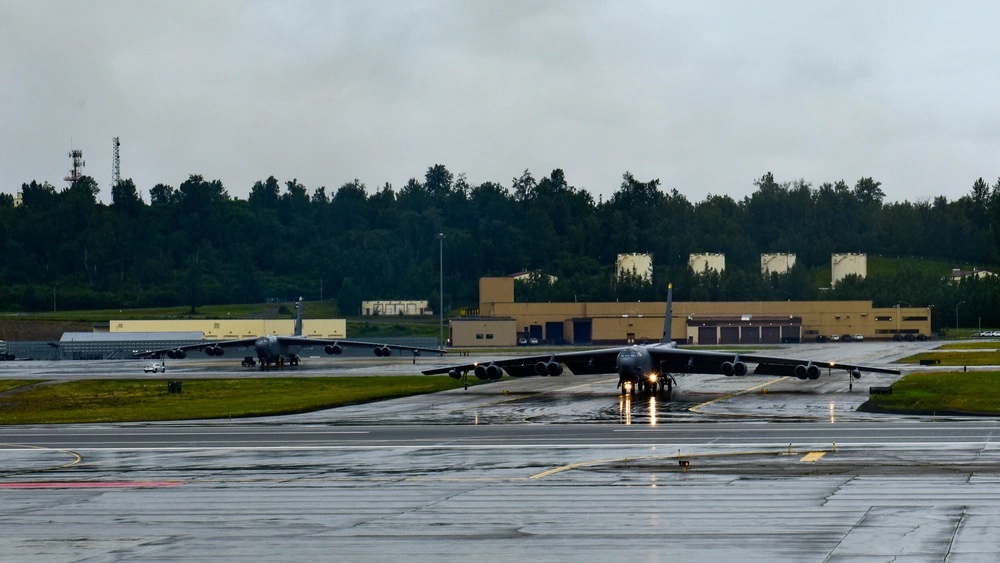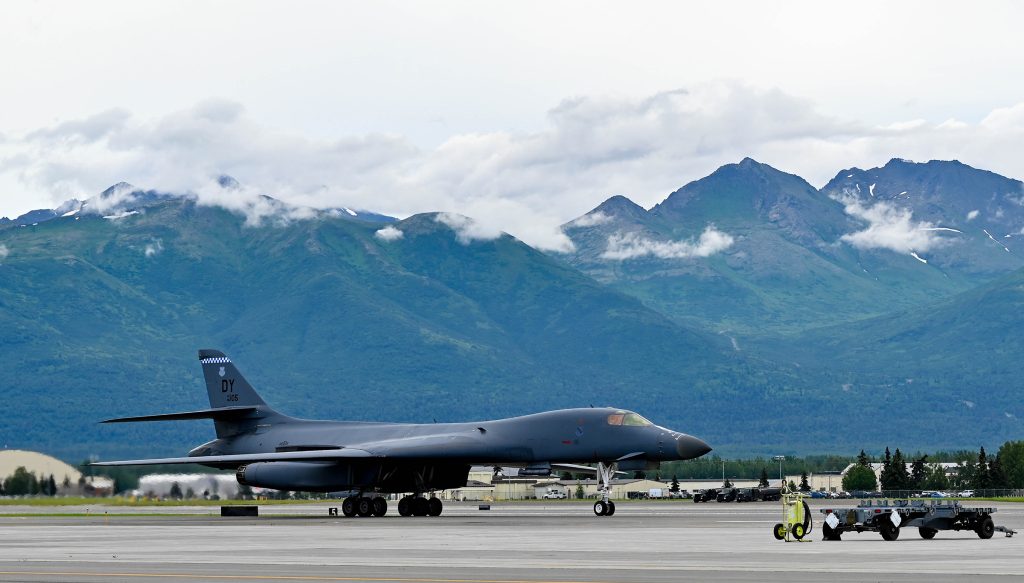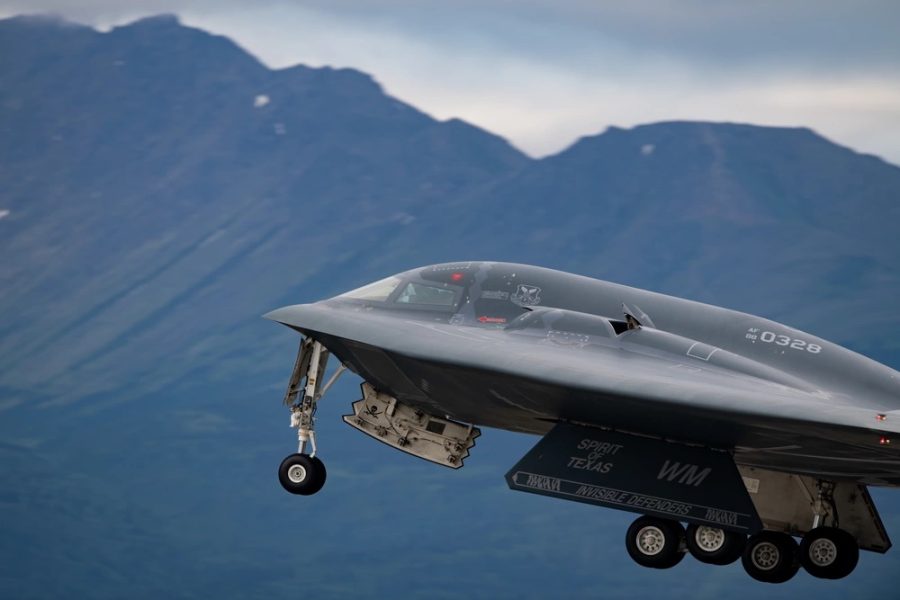All three Air Force bomber types—the B-1 Lancer, the B-2 Spirit, and the B-52 Stratofortress—gathered in Alaska from July 18-19 to practice operating from an unfamiliar airfield, a rare assembly of the trio of different aircraft and a demonstration of flexible deployment for America’s heavy-hitters.
For the B-2 in particular, the occasion also marked the first major exercise for the aircraft since a six-month, fleet-wide safety pause was lifted in May following a mishap in December.
“The concerted effort by all the bomber Airmen is a testament to the flexibility and agility of the force to operate in unfamiliar environments,” Justin Oakes, the director of public affairs for the Eighth Air Force and Joint-Global Strike Operations Center, told Air & Space Forces Magazine.
The bombers operated from Joint Base Elmendorf-Richardson (JBER)—the B-1s came from Dyess Air Force Base, Texas; the B-2s from Whiteman Air Force Base, Mo.; and the B-52s from Minot Air Force Base, N.D. JBER, which does not host bomber units, functioned as “a notional forward operating base” for the bomber units, a service release stated.
Operating from unfamiliar or austere airfields is a central tenet of Agile Combat Employment, the Air Force’s operating concept in which Airmen and aircraft disperse from a central base to smaller, more austere locations in order to complicate an adversary’s targeting.
“The ability to perform training and integration exercises at a location that does not traditionally host bombers is what defines this exercise as an Agile Combat Employment mission,” Oakes said in an email.
Once gathered at JBER, the bombers practiced “fighter integration, strategic communications, and targeting exercises performed by the bombers,” he added.

The Alaska mission marks the latest entry in a busy calendar for Air Force bombers. While the B-2 was grounded, B-52 or B-1 task forces visited Guam, Indonesia, Japan, Sweden, the Middle East, and other locations around the world, often in a demonstration of the bombers’ long reach.
“As a force provider, how we deliver bomber airpower has a definite strategic impact to all operations across the spectrum of conflict,” said Maj. Gen. Andrew Gebara, commander of the 8th Air Force and Joint-Global Strike Operations Center, in the press release about the JBER mission. Gerbera was on-site to observe the bombers arriving there.
“The bombers seen here today are proof of our reach and flexibility as they arrived from different areas of responsibility to a location we do not routinely occupy,” he said.
The exercise marks the most public appearance of the B-2 following its six-month safety pause. When the pause ended in late May, the Air Force did not reveal the exact cause of the December mishap, nor what actions allowed the aircraft to fly again. The B-2 is America’s only stealth nuclear-capable bomber in service.
“The B-2 fleet could still fly missions if so required,” Gebara said in May. “Our ability to provide nuclear deterrence never stopped.”
B-2 pilots spent time during the safety pause in the advanced simulators at Whiteman and increased repetitions in T-38 trainers. Only 21 B-2s were produced, costing over $1 billion per plane, according to the Air Force. One was destroyed in a crash in 2008.
Now that the B-2 is flying exercises again, Air Force officials hope allies and partners take notice of the tri-bomber gathering.
“Pacific Air Forces routinely exercises the ACE concept to ensure we can move forces fluidly across theaters of operations,” Gen. Ken Wilsbach, commander of the Pacific Air Forces, said in the press release. “To enhance that capability within our bomber force is crucial to ensuring we can provide a credible, effective deterrent and respond to any crisis across the globe.”
All three kinds of Air Force bombers gathered for a flyover of Super Bowl LV in 2021, an event that took months of coordination to pull off. The trio also flew together over Andersen Air Force Base, Guam, as part of an exercise in the Indo-Pacific in 2016.

